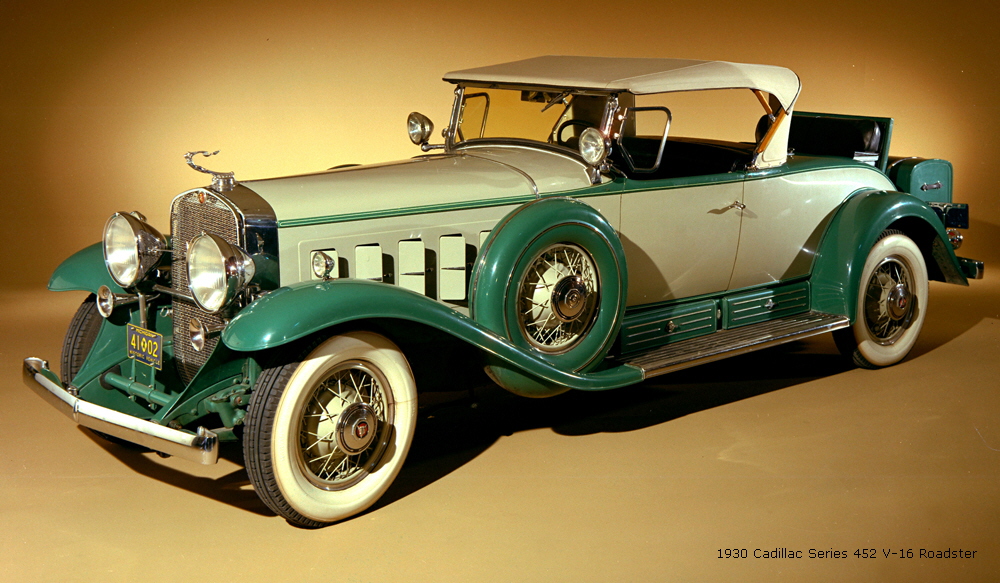
1930 Cadillac V-16 – The First Production Car with a Sixteen-cylinder Engine
The Cadillac “V-16” was the industry’s first production car to offer a sixteen-cylinder engine. Developed in absolute secrecy and unveiled at the New York Auto Show, it immediately stunned the luxury car competition and set a new standard for power, performance, and luxury
In the late 1920s, there were dozens of large luxury car brands in the U.S., but one car that took the market by surprise ended up spelling doom for most of the competition. That car was the Cadillac V-16, developed in absolute secrecy and unveiled without advance announcement at the 1930 New York Auto Show. Its unique sixteen-cylinder engine offered more power and smoother acceleration than anything the major U.S. luxury brands could offer and immediately set them scrambling for their own new engine. With the U.S. economy in deline, however, the luxury car market soon shrunk and the competing brands could not come up with the capital for an engine to compete with the V-16. Most of those brands did not survive the Great Depression. Production of the V-16 itself declined after the first year and it was discontinued in 1940 with a total of just over 4,000 units built. However, its impact on the competition and on Cadillac’s image cemented Cadillac’s position as the undisputed luxury car leader and a standard of the world. the Cadillac V-16 is highly prized among classic car collectors.
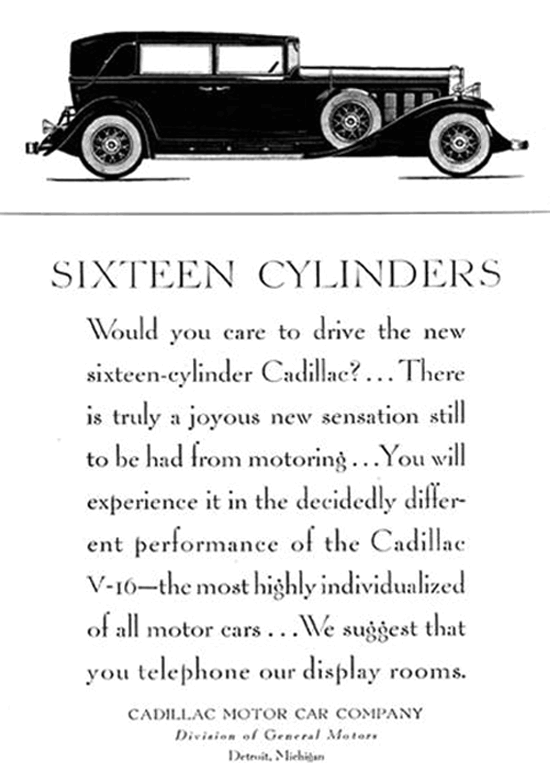
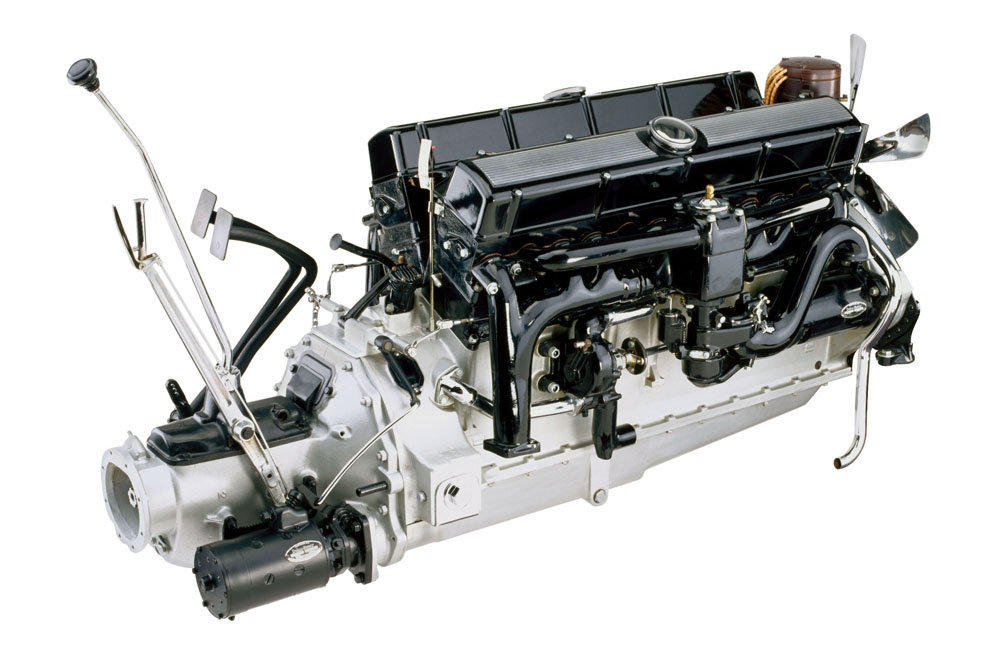
1930 Cadillac introduced the world’s first V16 engine for passenger-car use. This engine featured overhead valves with hydraulic lash adjusters, twin carburetors, dual exhaust, and a beautifully finished exterior design. It delivered 160 horsepower from 452 cubic inches (7.4 liter). A V12 derivative introduced later in the same model year produced 135 horsepower from 368 cubic inches (6.0 liter). This engine paced the 1931 Indy 500.
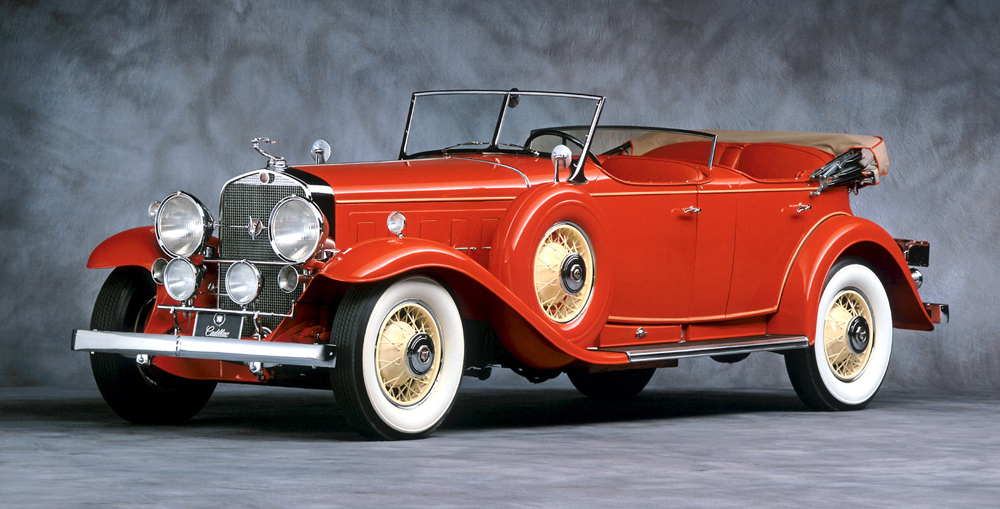
1931 Cadillac V16 Sport Phaeton
Focusing on the driver and passengers; The Cadillacs of the Thirties defined classic American sophistication and luxury. With the introduction of V12 and V16 engines, Cadillac led the industry in performance and engineering excellence. Designed by Owen Nacker, the V16 engine powered some of the most exciting Cadillac automobiles. This engine wasn’t the only innovative feature, because 1930 V16s also included the first vacuum-assisted “power” brakes. Cadillacs were truly becoming driver responsive.
Cadillac continued to pioneer and exert its leadership in other important engineering advances in this decade. Work began on the automatic transmission at Cadillac in 1932. In 1933, the first independent front suspension appeared on an experimental Cadillac and became a standard feature on the GM lineup for 1934.
Bill Mitchell, then only 24 years old, designed the new 1938 Cadillac 60 Special. Bigger than a LaSalle, the 60 special deleted running boards, featured thin window pillars, chrome-plated door window frames, and was designed to be the transition from chauffeur-driven to owner-driven luxury cars. This car would set styling trends for more than a decade.
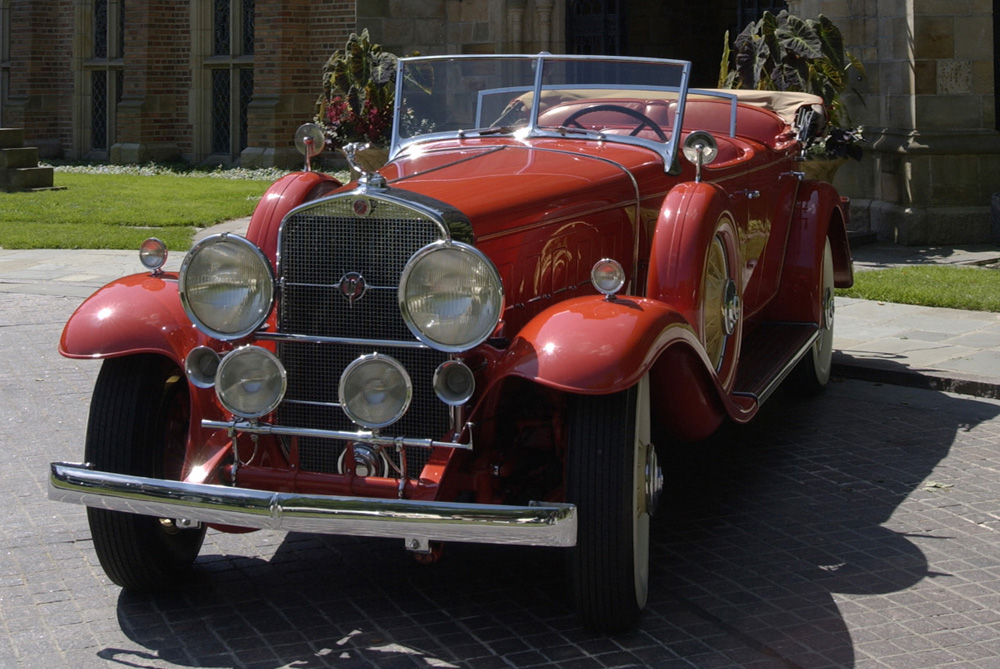
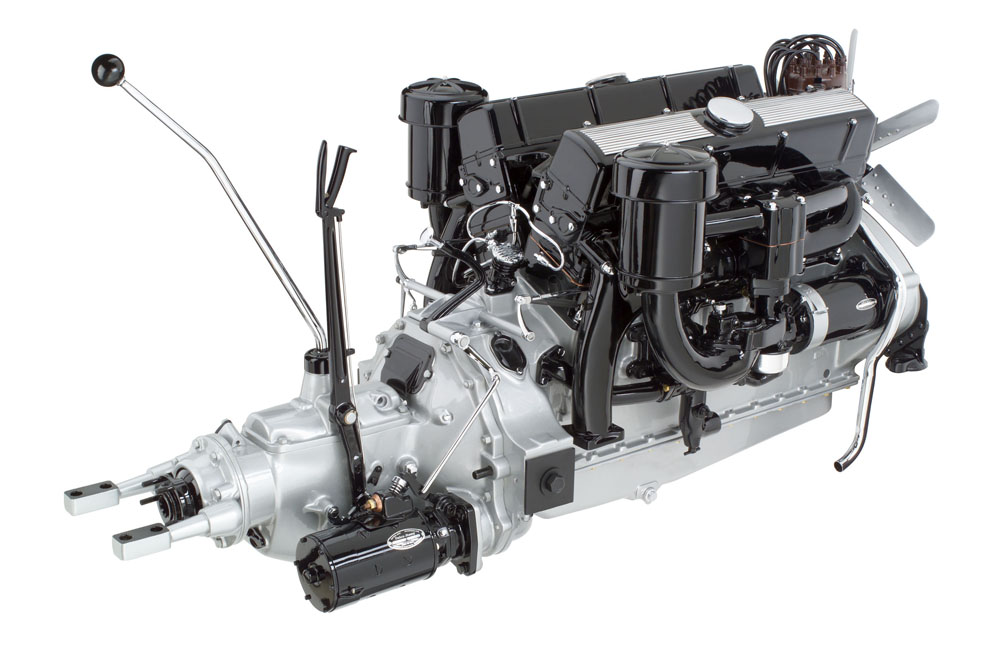



A 1934 rumbleseat roadster model 5802 — a one-of-a-kind Cadillac Fleetwood V-16 that was available but never ordered by customers during the Great Depression
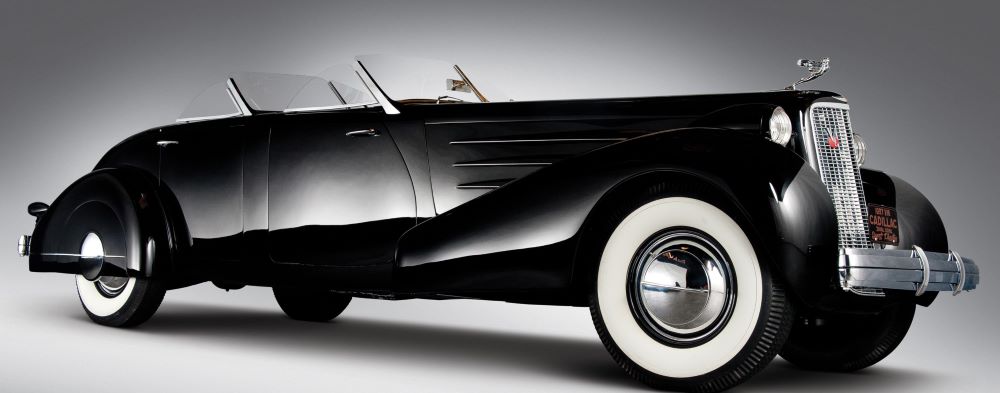
A 1937 Phaeton model 5859 — a one-of-a-kind Cadillac Fleetwood V-16 that was available but never ordered by customers during the Great Depression

- 1938 60 Special, First car without running boards.
1938 Cadillac introduced an all-new 16-cylinder design for a limited number of luxury models. This 431-cubic-inch (7.1 liter) L-head engine used twin carburetors, water pumps and distributors to generate 185 horsepower.
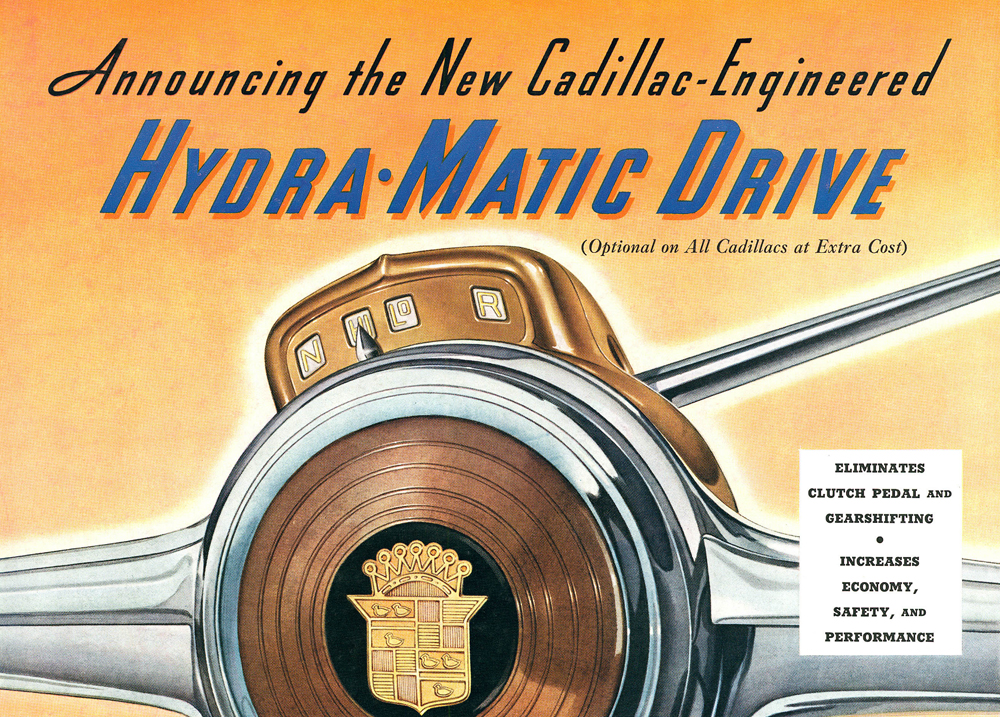
Introduced in 1940, Hydra-Matic was the first brand of mass-produced automatic transmission
Hydra-Matic transmissions draw on a rich tradition of engineering and manufacturing excellence. The first Hydra-Matic automatic transmission, which debuted on the 1940-model Oldsmobile, had four-speeds. This product provided a decided advantage over the competition, as General Motors entered the post WWII years as the only domestic auto manufacturer offering a fully automatic transmission
1940, The Cadillac “Sixty” Sets Another Styling Trend, The streamlined notchback styling of the Cadillac Sixty Special influenced roof and rear deck styling of a broad range of vehicles until World War II disrupted all U.S. vehicle production

1941 Cadillac Fleetwood Sixty-Special Touring Sedan
1948 Cadillac Fleetwood Sixty-Special Sedan
1948, The “Rocket” Era Begins, Oldsmobile’s “Rocket” V-8 was its first high-compression V-8 engine, launched in tandem with Cadillac’s first high-compression V-8. The 1949 model year Oldsmobile “Rocket 88” was an immediate hit and launched a generation of “Rocket” Oldsmobiles.
1948 Series 62 Convertible, First car with tailfins
The war years and the good times that followed
Sophistication, performance and comfort set new standards for the 1941 cars from Cadillac. That year, Cadillac first offered the hydramatic automatic transmission, as well as air conditioning and a gas tank filler cleverly hidden under the left taillight. Cadillac stopped all civilian automotive production in February 1942 to join the war effort on the homefront. In just 55 days, the first tank powered by two Cadillac V8 engines and two hydramatic transmissions rolled off the line at the Clark Avenue factory in Detroit. Other wartime products included M-8 howitzer carriages, the 1944 M-24 light tank and components for the V12 Allison Aircraft engine. Even General Douglas MacArthur’s staff car was a Cadillac, a Series 75.
After the war, cars from Cadillac were again ready to create a higher standard for the world. The 1948 Cadillacs had tailfins for the first time, modeled after the Lockheed P-38 fighter plane. Harley Earl had been inspired by that plane’s design and couldn’t wait to translate the profile to his cars. Because there was so much excitement about this design innovation, dealers would often park cars in their showrooms with the backs facing the window, leaving the taillights on overnight. The tailfins from these Cadillacs set design trends for decades.
1949
1949 Cadillac initiated the ’50s-era horsepower war with the introduction of the first overhead valve, high-compression V8 engine, rated 160 horsepower, making Cadillac the fastest passenger car in America.
In 1949, Cadillac introduced the high-compression, short-stroke, lightweight “modern” V8. This engine, which was smaller, lighter and more fuel efficient, made Cadillac the fastest, most powerful passenger vehicle in America. At the end of the decade, Briggs Cunningham finished tenth overall in a standard 1950 Cadillac at LeMans.
The Coupe DeVille hardtop was also introduced in 1949, earning Cadillac Motor Trend’s first “Car of the Year” award.
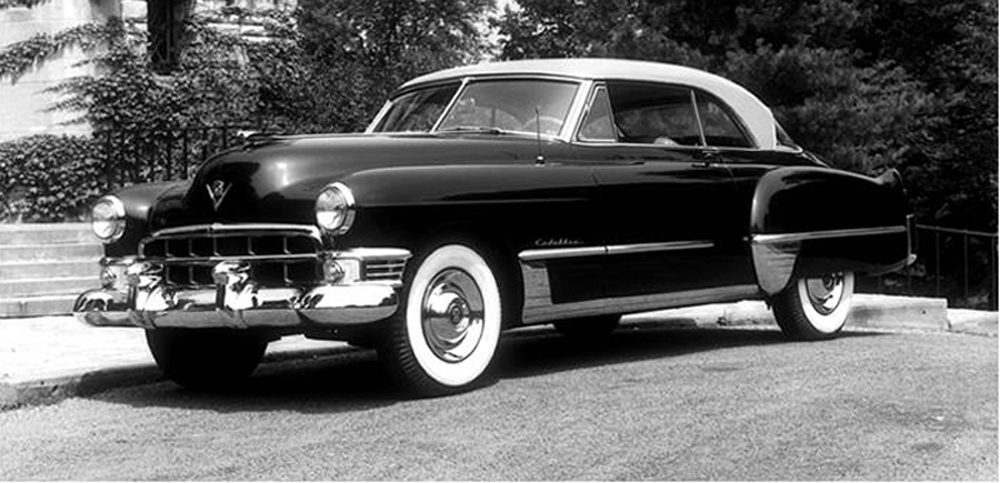
1949, Cadillac Adds a New V-8 and a Hardtop
In addition to offering Cadillac’s first high-compression overhead valve V-8, the 1949 model year Coupe de Ville was Cadillac’s first hardtop. The tail fins featured on the de Ville were introduced on other Cadillac models the previous model year.
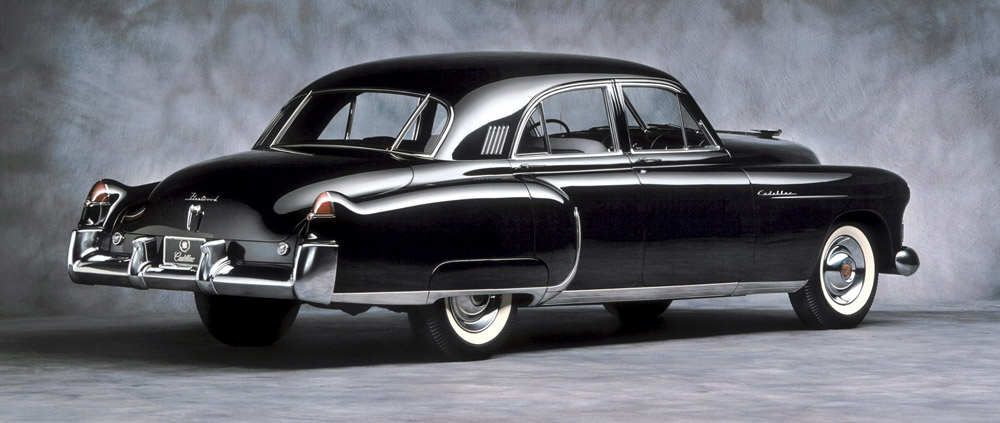
1949 Series 62 Sedanette, First year high-compression V-8

You must be logged in to post a comment.